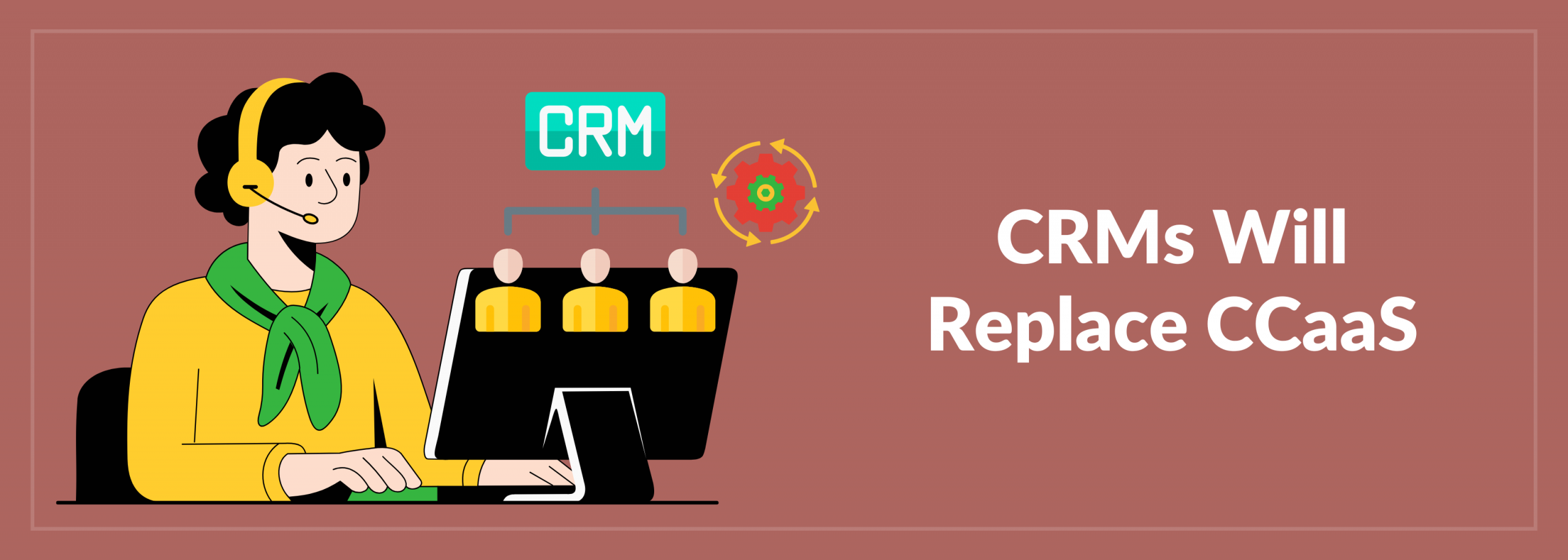Do You Believe That CRMs Will Replace CCaaS by 2027?
I read an article titled “The future of CCaaS and CRM integrations,” in CX Today. The article claims that 55 per cent of CX and IT leaders think that CRM systems will replace contact center platforms by the close of 2027.
Should you, as a contact center platform, press the panic button?
Let us try to understand this in simple terms.
CRM platforms and contact center as a service (CCaaS) tools serve different, though overlapping, purposes. They both have strengths that the other can’t fully replicate.
That’s why we keep talking about tight integration between CCaaS solution and CRM systems.
Here are four reasons why you shouldn’t hit the panic button as yet.
Voice and Real-Time Communications Still Need Specialized Infrastructure
Real-time voice, routing, workforce management, and scaling up call queues are the mainstays of CCaaS platforms. However, they require complex infrastructure, reliability, and domain expertise.
These are not capabilities that CRM is built to own.
While CRMs are embedding things like voice control and omnichannel tools, these remain third-party modules.
Domain Experience Matters
Running a contact center involves a range of key functions, including smart routing, real-time call handling, queue management, agent coaching, compliance, and workforce optimization, among others. These require years of fine-tuning, real-world experience, and deep understanding of customer service operations.
CRM platforms excel at managing customer relationships, but handling a customer’s live support experience in real-time with skill-based routing, sentiment analysis, escalation paths, and compliance checks is a completely different ballgame.
Most CRM systems that claim to perform the contact center function are primarily retrofitted with contact center features. However, they lack the depth, flexibility, and scalability that contact centers actually need.
What About Operational Insights?
What are the operational insights that are core to running a healthy contact center?
Agent productivity, quality monitoring, and conversational analytics.
When it comes to these deep operational metrics, CRM systems provide only surface-level visibility, which would cripple optimization and coachability.
CRMs and AI Hallucinations
A retail brand recently faced a backlash when its AI-powered CRM chatbot told customers they could return sale items for a full refund, even though the company’s policy clearly said otherwise.
Why?
The AI was trained on marketing material, not the actual return policy.
Social media blew up. Support agents were flooded with angry calls.
Most CRMs aren’t built to handle real-time fail-safes like:
- Live escalations to a human when things go south
- Sentiment detection when a customer is getting frustrated
- Agent-assist tools that quietly step in to correct the course mid-conversation
CRMs are amazing at organizing customer information. But when you mix in AI, you need guardrails. Those guardrails live in modern CCaaS platforms, where AI isn’t working in isolation, but alongside human agents, routing systems, quality checks, and escalation paths.
While CRMs may absorb some CCaaS functionalities, especially through AI tools and unified interfaces, the core work of contact centers still requires specialized platforms.
What CCaaS Providers Should Do to Stay Relevant?
Here are three actionable strategies that you can employ.
1. Double Down on Being Communication Experts
CCaaS vendors should focus on their niche: providing communication systems that feed rich, real-time data into CRMs, rather than trying to become everything.
For example, ClearTouch Operator can take a CRM-first approach, where all QA, workforce, and conversational analytics data flows into the CRM, giving businesses a single pane without CRMs having to manage the real-time data themselves.
2. Lead with Context, and Not Just Tools
You have implemented a chatbot, and it has started interacting with your customers. Is everything hunky dory now on the customer interactions?
What matters is the intelligence behind the chatbot, such as understanding the customer’s identity, the purpose of their call, the agent’s strengths, and dynamically guiding the conversation.
A well-designed CCaaS automatically routes a high-value customer to a senior agent with specialized empathy training, and not to the next available agent.
3. Invest in Proactive, AI-Powered Capabilities
Forward-thinking teams use CCaaS powered by AI to proactively surface friction points like abandoned carts, billing confusion, and slow fulfilment, and trigger self-service or outreach before the customer reaches out.
How Do You Bring Them Together?
Some features of CCaaS and CRM overlap, but consider all the grunt work CRMs weren’t designed for, such as routing calls, handling spikes, coaching agents, and real-time QA.
We should focus on strengthening integrations absolutely.
Together, you can power the data, orchestrate the conversation, surface issues early, offer smart self-service, agent assist, real-time analytics, and access all customer conversations from across all interfaces.
Read our blog on : 8 must have call center integration
Is the verdict still out on whether CRMs are going to replace CCaaS platforms?
- No, CRMs won’t fully replace contact center platforms by 2027. They can integrate, but the specialized, live, operational layer of CCaaS is still essential.
- CCaaS vendors need to double down on being domain experts, literally owning communication systems and pushing data into the CRM.
- After all, everything should feel seamless to the customer. They don’t care about the tech stacks. They care that connections feel effortless and human, which can be made possible with tight integrations between CCaaS and CRM.
